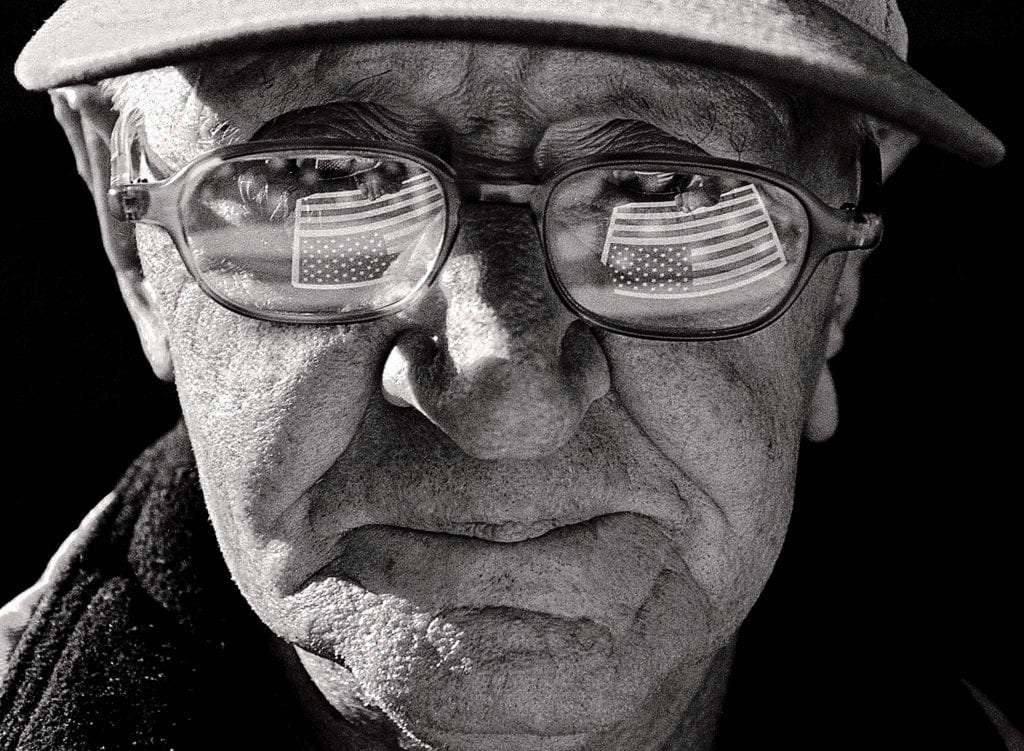There were a number of other epiphanies I experienced on that amazing photographic road trip for my America At The Edge Project , many of which help form the foundation of my Ten-Step Passionate Photographer process that I’m passing on to you here.
I realized, for a photographer, a day never has to end. Life is 24/7, and so too are photo opportunities. The look, feel, light, and rhythm of a place constantly change and can be interesting at different times of the day or night. I just needed to edit my situations, choosing where and when to photograph. I needed to use visual potential as my criteria, and learn to slow down and be patient.
The project taught me the rewards of leaving my comfort zone and getting past my own fears. A shy person like me, working on a project that required me to make contact with strangers certainly did that. (I will outline my strategies for photographing people in an upcoming post).

There’s probably truth to the idea that only tourists show up in Times Square on New Year’s Eve. New Yorkers prefer to watch on TV or livestream, or do other things. Being there in person requires attendees to get there many hours in advance to secure a spot. Once there, security dictates you can’t really leave said spot. Plus, it’s sometimes very, very cold. But photographers do crazy things for a good photograph, and I was really happy to capture this image of the kissing couple when the year became new.
“Who is the happier man, he who has braved the storm of life and lived or he who has stayed securely on shore and merely existed?” Hunter S. Thompson
I love that quote form one of my favorite authors Hunter S.
I learned to trust my instincts and intuition when I photographed the Aryan Nations, for example, and I learned that patience and persistence would often be rewarded with great images.

I heard about a Canadian, Ronald Smith, on death row in Montana, whom I wanted to interview and photograph. The red tape was long, but after a year of writing letters, I was finally given permission. I got to ride along with local police forces in Detroit, Buffalo, and Minneapolis. Some stories seem impossible to access, but you’d be surprised how many times seemingly impossible permissions are granted to photographers. It’s not impossible and it’s always worth a try. Try.

I realized that each shooting situation was a process, and by shooting a larger volume of frames while doing a compositional dance around my subject—eye to the viewfinder—I would see my subject from all angles, which often took me to great images I would not have otherwise found.
This dance to move around your subject, as I will outline in upcoming posts, increased my editing time by making my choices difficult because I had a lot of photography I was happy about. If making a stronger image meant shooting more, then I gladly did so. And the more I danced the more I learned to fast track intuitively to stronger compositions.
I learned to edit thoroughly and seek out trusted second opinions that would offer me the insight I needed because I was too close to the material to see it myself. Editing is all important and I plan to devote plenty of posts and video to it. It’s because I see it often on my workshops: talented shooters who are just not confident in their culling process to get to the strongest images. It’s a process that you will get better at with time and experience, but being so close to your work, you will always need a second set of eyes to learn, grow, and improve.
By looking at thumbnail contact sheets I could see when I had not worked the scene enough. I learned from my mistakes and adjusted. When possible, I would go back and correct them—a great way to strengthen a photographic weakness a continuing theme in the content on this Patreon site.
I learned that when distracted, I was not doing my best work. I needed to discipline myself—to concentrate and be in the moment, finding my way into the “photographic zone”, which I will discuss at length.
I observed how light was constantly changing, and I needed to follow the light to increase my chances of getting better images and be alert and work quickly when the light was good because it moved so fast.
I set actionable goals for my project and stuck to them, leaving room for spontaneity and new paths forward. As the project neared completion, I was not shy about seeking opportunities that helped get my vision out to the world. So much growth—and all from one personal project.
Every project since has been extremely rewarding. Good things happened that I never could have predicted—throughout the journey and through to the finished work. I am more excited and enthusiastic than ever.
I have rediscovered the sheer joy of photography I felt as a young man when I was riding my motorcycle through the suburban streets of Montreal, finding photographic surprises around every corner.
Stick with me here and you too will experience this photographic joy.
Ronald Allen Smith has been on death row in Montana since 1983, convicted on two counts of aggravated kidnapping and deliberate homicide. The Canadian government has sought clemency, as is customary for Canadian citizens sentenced to death in foreign countries. Five execution dates have been set and overturned. At the time of writing, Smith awaits a court ruling on the constitutionality of Montana’s lethal injection protocol.












I loved your story.